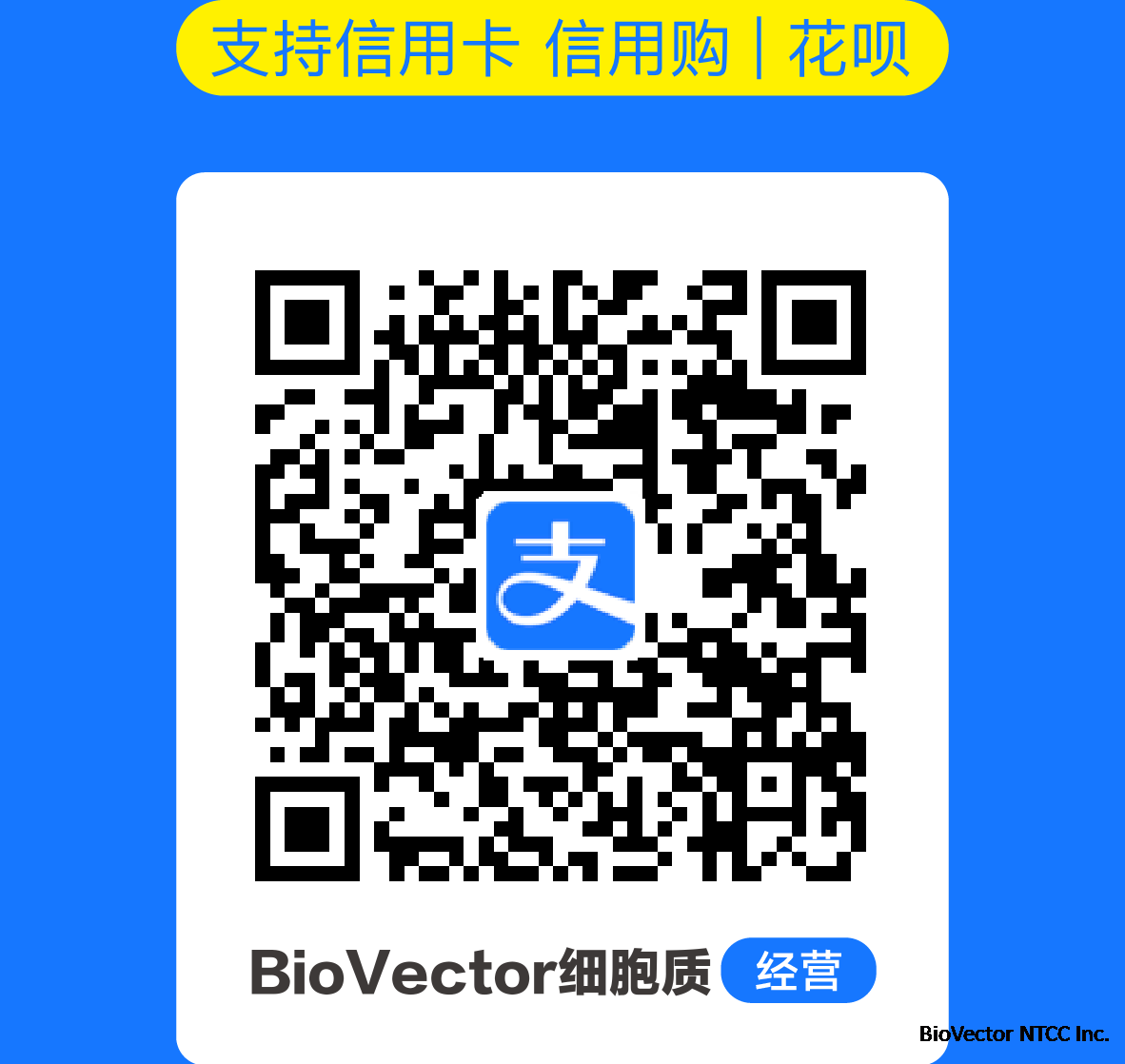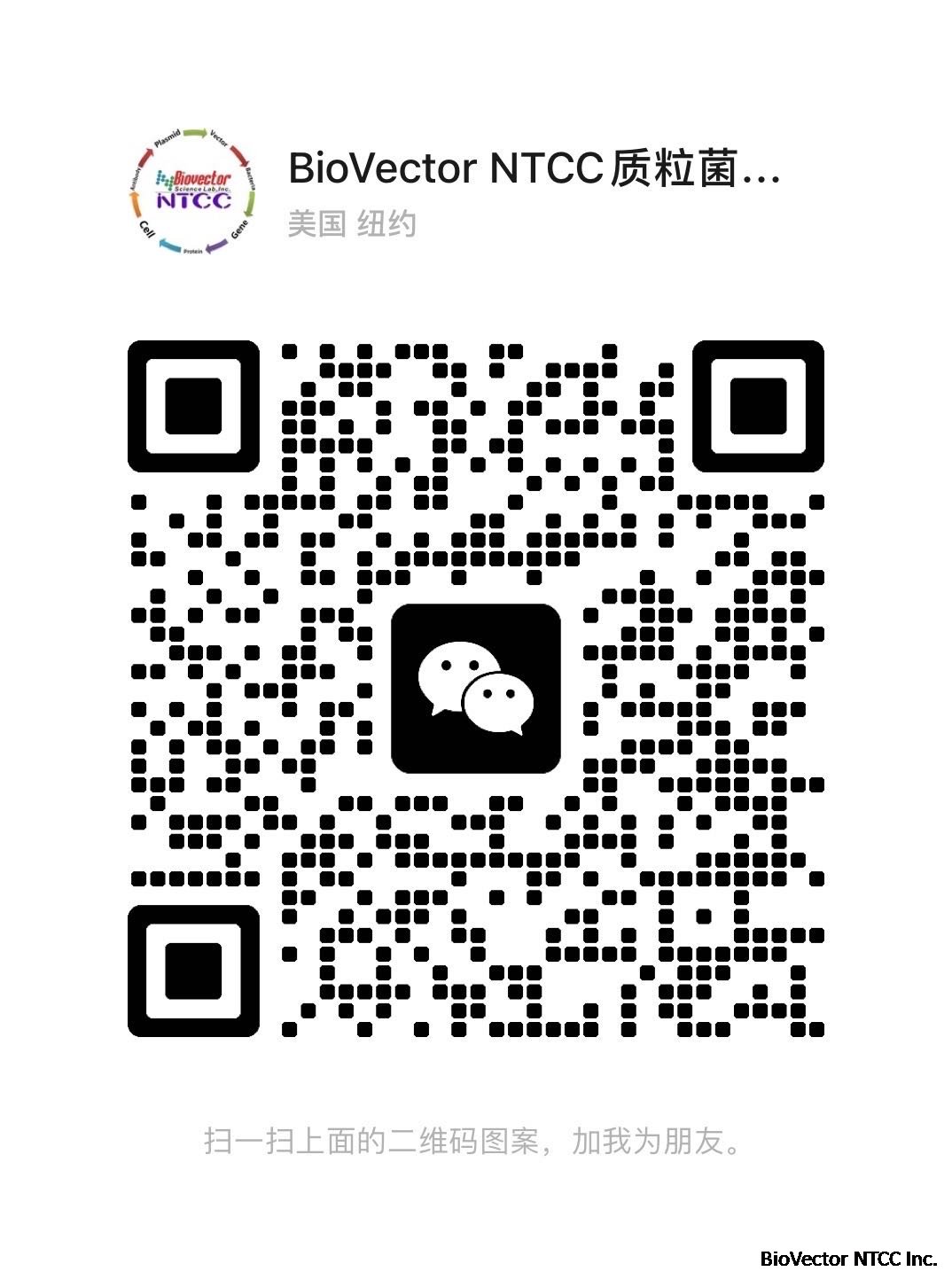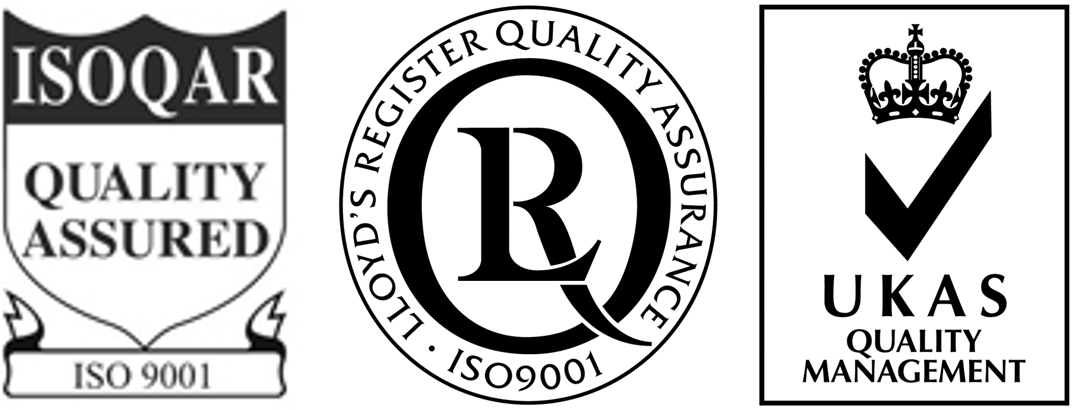- BioVector NTCC典型培养物保藏中心
- 联系人:Dr.Xu, Biovector NTCC Inc.
电话:400-800-2947 工作QQ:1843439339 (微信同号)
邮件:Biovector@163.com
手机:18901268599
地址:北京
- 已注册
HEK293/GCGR/Gα15 BioVector NTCC质粒载体菌种细胞基因保藏中心 HEK293/GCGR/Gα15 cell line
Cat No.: NTCC596463
I. Introduction
Cell Line Name: HEK293/GCGR/Gα15
Gene Synonyms: GCGR; GGR; MGC138246
Expressed Gene: Genbank Accession Number NM_000160; no expressed tags
Host Cell: HEK293
Quantity: Two vials of frozen cells (3×106
per vial)
Stability: 16 passages
Application: Functional assay for glucagon receptor
Freeze Medium: 45% culture medium, 45% FBS, 10% DMSO
Complete Growth Medium: DMEM, 10% FBS
Culture Medium: DMEM, 10% FBS, 50 μg/ml Hygromycin B, 300 μg/ml G418
Mycoplasma Status: Negative
Storage: Liquid nitrogen immediately upon delivery
II. Background
Glucagon regulates blood glucose via control of hepatic glycogenolysis and gluconeogenesis and via regulation of
insulin release from the β cell. Pharmacological administration of glucagon increases blood glucose in normal and
diabetic subjects, and produces positive inotropic and chronotropic cardiovascular effects, relaxation of smooth
muscle in the gastrointestinal tract and stimulation of growth hormone secretion. The actions of glucagon are
mediated via a single adenylate cyclase-coupled glucagon receptor that also couples to the phospholipase Cinositol
phosphate (PLC-IP) pathway leading to Ca2+ release from intracellular stores.
III. Representative Data
Concentration-dependent stimulation of intracellular calcium mobilization by Glucagon in
HEK293/GCGR/Gα15 and HEK293 cells
Figure 1. Glucagon-induced concentration-dependent stimulation of intracellular calcium mobilization in
HEK293/GCGR/Gα15 and HEK293 cells. The cells were loaded with Calcium-4 prior to stimulation with a GCGR
receptor agonist, Glucagon. The intracellular calcium change was measured by FlexStation. The relative
fluorescent units (RFU) were plotted against the log of the cumulative doses (5-fold dilution) of Glucagon (Mean ±
SD, n = 2). The EC50 of Glucagon on GCGR co-expressing with Gα15 in HEK293 cells was 9.4 nM. The S/B of
Glucagon on GCGR co-expressing with Gα15 in HEK293 cells was 18.
Notes:
1. EC50 value is calculated with four parameter logistic equation:
Y=Bottom + (Top-Bottom)/(1+10^((LogEC50-X)*HillSlope))
X is the logarithm of concentration. Y is the response
Y is RFU and starts at Bottom and goes to Top with a sigmoid shape.
2. Signal to background Ratio (S/B) = Top/Bottom
IV. Thawing and Subculturing
Thawing: Protocol
1. Remove the vial from liquid nitrogen tank and thaw cells quickly in a 37°C water-bath.
2. Just before the cells are completely thawed, decontaminate the outside of the vial with 70% ethanol and
transfer the cells to a 15 ml centrifuge tube containing 9 ml of complete growth medium.
3. Pellet cells by centrifugation at 200 x g force for 5 min, and discard the medium.
4. Resuspend the cells in complete growth medium.
5. Add 10 ml of the cell suspension in a 10 cm dish.
6. Add Hygromycin B and G418 to concentrations of 50 μg/ml and 300 μg/ml respectively the following day.
V. References
1. Moore, M. C. and Cherrington, A. D., Autoregulation of hepatic glucose production(1998). Eur. J. Endocrinol..
138: 240-248
2. Samols, E. and Marks, V., Interrelationship of glucagon, insulin, and glucose: The insulinogenic effect of
glucagon(1966). Diabetes. 15: 855-865
3. Muhlhauser, I. et al., Incidence and management of severe hypoglycemia in 434 adults with insulin-dependent
diabetes mellitus(1985). Diabetes Care. 8: 268-273
4. White, C. M., A review of potential cardiovascular uses of intravenous glucagon administration (1999). J. Clin. Pharmacol. 39: 442-447
5. Wakelam, M. J. and Houslay, M. D., Activation of two signal-transduction systems in hepatocytes by
glucagon(1986). Nature. 323: 68-71
The flask was seeded with cells, grown, and completely filled with medium to prevent loss of cells during shipping.
1. Upon receipt, visually examine the culture for macroscopic evidence of any microbial contamination. Using an inverted microscope (preferably equipped with phase-contrast optics), carefully check for any evidence of microbial contamination. Also, check to determine if the majority of cells are still attached to the bottom of the flask; during shipping the cultures are sometimes handled roughly and many of the cells often detach and become suspended in the culture medium (but are still viable).
2. If the cells are still attached, aseptically remove all but 5 to 10 mL of the shipping medium. The shipping medium can be saved for reuse. Incubate the cells at 37°C in a 5% CO2 in air atmosphere until they are ready to be subcultured.
3. If the cells are not attached, aseptically remove the entire contents of the flask and centrifuge at 125 x g for 5 to 10 minutes. Remove shipping medium and save. Resuspend the pelleted cells in 10mL of this medium and add to 25 cm2 flask. Incubate at 37°C in a 5% CO2 in air atmosphere until cells are ready to be subcultured.
To insure the highest level of viability, thaw the vial and initiate the culture as soon as possible upon receipt. If upon arrival, continued storage of the frozen culture is necessary, it should be stored in liquid nitrogen vapor phase and not at 70°C. Storage at 70°C will result in loss of viability.
1. Thaw the vial by gentle agitation in a 37°C water bath. To reduce the possibility of contamination, keep the Oring and cap out of the water. Thawing should be rapid (approximately 2 minutes).
2. Remove the vial from the water bath as soon as the contents are thawed, and decontaminate by dipping in or spraying with 70% ethanol. All of the operations from this point on should be carried out under strict aseptic conditions.
3. Transfer the vial contents to a centrifuge tube containing 9.0 mL complete culture medium and spin at approximately 125 x g for 5 to 10 minutes.
4. Resuspend cell pellet with the recommended complete medium (see the specific batch information for the culture recommended dilution ratio) and dispense into a 25 cm2 or a 75 cm2 culture flask. It is important to avoid excessive alkalinity of the medium during recovery of the cells. It is suggested that, prior to the addition of the vial contents, the culture vessel containing the complete growth medium be placed into the incubator for at least 15 minutes to allow the medium to reach its normal pH (7.0 to 7.6).
5. Incubate the culture at 37°C in a suitable incubator. A 5% CO2 in air atmosphere is recommended if using the medium described on this product.
Subculturing: Protocol
1. Remove and discard culture medium.
2. Wash cells with PBS (pH=7.4) to remove all traces of serum that contains trypsin inhibitor.
3. Add 2.0 ml of 0.05% (w/v) Trypsin- EDTA (GIBCO, Cat No. 25300) solution to 10 cm dish and observe the
cells under an inverted microscope until cell layer is dispersed (usually within 3 to 5 minutes).
Note: To avoid clumping, do not agitate the cells by hitting or shaking the dish while waiting for the cells to
detach. Cells that are difficult to detach may be placed at 37°C to facilitate dispersal.
4. Add 6.0 to 8.0 ml of complete growth medium and aspirate cells by gently pipetting, centrifuge the cells 200 x
g force for 5min, and discard the medium.
5. Resuspend the cells in culture medium and add appropriate aliquots of the cell suspension to new culture
vessels.
6. Incubate cultures at 37°C.
Subcultivation Ratio: 1:3 to 1:8 weekly.
Medium Renewal: Every 2 to 3 days
BioVector NTCC质粒载体菌种细胞蛋白抗体基因保藏中心
电话:+86-010-53513060
网址:www.biovector.net [Supplier来源] http://www.biovector.net
Cat No.: NTCC596463
I. Introduction
Cell Line Name: HEK293/GCGR/Gα15
Gene Synonyms: GCGR; GGR; MGC138246
Expressed Gene: Genbank Accession Number NM_000160; no expressed tags
Host Cell: HEK293
Quantity: Two vials of frozen cells (3×106
per vial)
Stability: 16 passages
Application: Functional assay for glucagon receptor
Freeze Medium: 45% culture medium, 45% FBS, 10% DMSO
Complete Growth Medium: DMEM, 10% FBS
Culture Medium: DMEM, 10% FBS, 50 μg/ml Hygromycin B, 300 μg/ml G418
Mycoplasma Status: Negative
Storage: Liquid nitrogen immediately upon delivery
II. Background
Glucagon regulates blood glucose via control of hepatic glycogenolysis and gluconeogenesis and via regulation of
insulin release from the β cell. Pharmacological administration of glucagon increases blood glucose in normal and
diabetic subjects, and produces positive inotropic and chronotropic cardiovascular effects, relaxation of smooth
muscle in the gastrointestinal tract and stimulation of growth hormone secretion. The actions of glucagon are
mediated via a single adenylate cyclase-coupled glucagon receptor that also couples to the phospholipase Cinositol
phosphate (PLC-IP) pathway leading to Ca2+ release from intracellular stores.
III. Representative Data
Concentration-dependent stimulation of intracellular calcium mobilization by Glucagon in
HEK293/GCGR/Gα15 and HEK293 cells
Figure 1. Glucagon-induced concentration-dependent stimulation of intracellular calcium mobilization in
HEK293/GCGR/Gα15 and HEK293 cells. The cells were loaded with Calcium-4 prior to stimulation with a GCGR
receptor agonist, Glucagon. The intracellular calcium change was measured by FlexStation. The relative
fluorescent units (RFU) were plotted against the log of the cumulative doses (5-fold dilution) of Glucagon (Mean ±
SD, n = 2). The EC50 of Glucagon on GCGR co-expressing with Gα15 in HEK293 cells was 9.4 nM. The S/B of
Glucagon on GCGR co-expressing with Gα15 in HEK293 cells was 18.
Notes:
1. EC50 value is calculated with four parameter logistic equation:
Y=Bottom + (Top-Bottom)/(1+10^((LogEC50-X)*HillSlope))
X is the logarithm of concentration. Y is the response
Y is RFU and starts at Bottom and goes to Top with a sigmoid shape.
2. Signal to background Ratio (S/B) = Top/Bottom
IV. Thawing and Subculturing
Thawing: Protocol
1. Remove the vial from liquid nitrogen tank and thaw cells quickly in a 37°C water-bath.
2. Just before the cells are completely thawed, decontaminate the outside of the vial with 70% ethanol and
transfer the cells to a 15 ml centrifuge tube containing 9 ml of complete growth medium.
3. Pellet cells by centrifugation at 200 x g force for 5 min, and discard the medium.
4. Resuspend the cells in complete growth medium.
5. Add 10 ml of the cell suspension in a 10 cm dish.
6. Add Hygromycin B and G418 to concentrations of 50 μg/ml and 300 μg/ml respectively the following day.
V. References
1. Moore, M. C. and Cherrington, A. D., Autoregulation of hepatic glucose production(1998). Eur. J. Endocrinol..
138: 240-248
2. Samols, E. and Marks, V., Interrelationship of glucagon, insulin, and glucose: The insulinogenic effect of
glucagon(1966). Diabetes. 15: 855-865
3. Muhlhauser, I. et al., Incidence and management of severe hypoglycemia in 434 adults with insulin-dependent
diabetes mellitus(1985). Diabetes Care. 8: 268-273
4. White, C. M., A review of potential cardiovascular uses of intravenous glucagon administration (1999). J. Clin. Pharmacol. 39: 442-447
5. Wakelam, M. J. and Houslay, M. D., Activation of two signal-transduction systems in hepatocytes by
glucagon(1986). Nature. 323: 68-71
The flask was seeded with cells, grown, and completely filled with medium to prevent loss of cells during shipping.
1. Upon receipt, visually examine the culture for macroscopic evidence of any microbial contamination. Using an inverted microscope (preferably equipped with phase-contrast optics), carefully check for any evidence of microbial contamination. Also, check to determine if the majority of cells are still attached to the bottom of the flask; during shipping the cultures are sometimes handled roughly and many of the cells often detach and become suspended in the culture medium (but are still viable).
2. If the cells are still attached, aseptically remove all but 5 to 10 mL of the shipping medium. The shipping medium can be saved for reuse. Incubate the cells at 37°C in a 5% CO2 in air atmosphere until they are ready to be subcultured.
3. If the cells are not attached, aseptically remove the entire contents of the flask and centrifuge at 125 x g for 5 to 10 minutes. Remove shipping medium and save. Resuspend the pelleted cells in 10mL of this medium and add to 25 cm2 flask. Incubate at 37°C in a 5% CO2 in air atmosphere until cells are ready to be subcultured.
To insure the highest level of viability, thaw the vial and initiate the culture as soon as possible upon receipt. If upon arrival, continued storage of the frozen culture is necessary, it should be stored in liquid nitrogen vapor phase and not at 70°C. Storage at 70°C will result in loss of viability.
1. Thaw the vial by gentle agitation in a 37°C water bath. To reduce the possibility of contamination, keep the Oring and cap out of the water. Thawing should be rapid (approximately 2 minutes).
2. Remove the vial from the water bath as soon as the contents are thawed, and decontaminate by dipping in or spraying with 70% ethanol. All of the operations from this point on should be carried out under strict aseptic conditions.
3. Transfer the vial contents to a centrifuge tube containing 9.0 mL complete culture medium and spin at approximately 125 x g for 5 to 10 minutes.
4. Resuspend cell pellet with the recommended complete medium (see the specific batch information for the culture recommended dilution ratio) and dispense into a 25 cm2 or a 75 cm2 culture flask. It is important to avoid excessive alkalinity of the medium during recovery of the cells. It is suggested that, prior to the addition of the vial contents, the culture vessel containing the complete growth medium be placed into the incubator for at least 15 minutes to allow the medium to reach its normal pH (7.0 to 7.6).
5. Incubate the culture at 37°C in a suitable incubator. A 5% CO2 in air atmosphere is recommended if using the medium described on this product.
Subculturing: Protocol
1. Remove and discard culture medium.
2. Wash cells with PBS (pH=7.4) to remove all traces of serum that contains trypsin inhibitor.
3. Add 2.0 ml of 0.05% (w/v) Trypsin- EDTA (GIBCO, Cat No. 25300) solution to 10 cm dish and observe the
cells under an inverted microscope until cell layer is dispersed (usually within 3 to 5 minutes).
Note: To avoid clumping, do not agitate the cells by hitting or shaking the dish while waiting for the cells to
detach. Cells that are difficult to detach may be placed at 37°C to facilitate dispersal.
4. Add 6.0 to 8.0 ml of complete growth medium and aspirate cells by gently pipetting, centrifuge the cells 200 x
g force for 5min, and discard the medium.
5. Resuspend the cells in culture medium and add appropriate aliquots of the cell suspension to new culture
vessels.
6. Incubate cultures at 37°C.
Subcultivation Ratio: 1:3 to 1:8 weekly.
Medium Renewal: Every 2 to 3 days
BioVector NTCC质粒载体菌种细胞蛋白抗体基因保藏中心
电话:+86-010-53513060
网址:www.biovector.net [Supplier来源] http://www.biovector.net
您正在向 biovector.net 发送关于产品 HEK293/GCGR/Gα15 BioVector NTCC质粒载体菌种细胞基因保藏中心 的询问
- 公告/新闻




